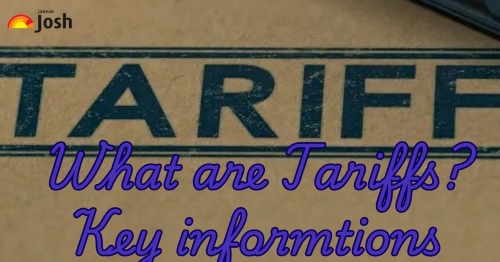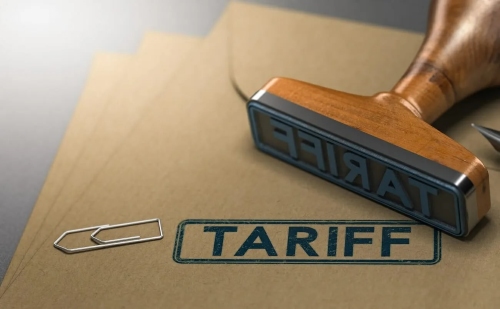Tariffs, or customs duties, are taxes imposed on imported goods, widely used as a trade regulation tool. They aim to protect domestic industries, generate revenue, and influence international trade dynamics. While proponents argue they safeguard local manufacturing, critics highlight their potential to increase consumer prices and disrupt global trade.
Breaking: President Trump has imposed tariffs on imports from Canada, Mexico and China, the nation’s three largest trading partners, in the first official actions of his second-term trade war. https://t.co/Ql1XxsgPPI
— The Washington Post (@washingtonpost) February 1, 2025
What Are Tariffs?
Tariffs are taxes imposed on imported goods, designed to regulate international trade and protect domestic industries from foreign competition. While tariffs can help local manufacturers, they often increase consumer prices.

Types of Tariffs
| Type | Description | Example |
| Ad Valorem Tariffs | A percentage tax is based on the value of the imported goods. | 25% tariff on imported electronics. |
| Specific Tariffs | A fixed charge per unit of an imported good. | $1 tariff per imported avocado. |
| Tariff-Rate Quotas | A tax is triggered after a specific import threshold is reached. | The first 1.2 million washing machines are taxed at 20%, and additional units at 50%. |
Who Pays for Tariffs?
Contrary to popular belief, importing companies, not foreign governments, pay tariffs. The U.S. Customs and Border Protection collects these tariffs from businesses importing goods, and these costs are often passed on to consumers.
Impact on Prices:
- Businesses absorb costs → Reduces profit margins.
- Consumers pay higher prices → Inflationary effects.
- Foreign manufacturers lower prices → To maintain market share.
Why Do Governments Impose Tariffs?
Governments impose tariffs on imported goods for various economic, social, and strategic reasons. Below are some of the primary motives behind tariff imposition:

Source: CFI
1. Safeguarding Domestic Industries
- Tariffs help shield local industries from competition posed by cheaper imported goods.
- By increasing the cost of foreign products, governments encourage consumers to support domestic businesses, thereby preventing job losses and fostering economic stability.
2. Ensuring Consumer Safety
- In some cases, imported goods may not meet safety standards or could contain harmful substances.
- By imposing tariffs, governments discourage excessive consumption of such products, thereby protecting public health.
3. Strengthening National Security
- Certain industries, such as defense and energy, are critical to national security. Dependence on imports for these sectors can pose risks.
- Tariffs reduce reliance on external suppliers and support domestic production of strategically important goods.
4. Promoting Emerging Industries
- New and growing industries often struggle to compete with established international players.
- Tariffs provide these sectors with a level playing field by making domestic products more competitive, fostering innovation, and ensuring long-term industrial growth.
What are the Misconceptions on tariffs?
| Claim | Reality |
| "Foreign countries pay tariffs." | Importers pay tariffs, not foreign governments. |
| "Tariffs generate revenue for the U.S." | While tariffs bring government revenue, they increase costs for businesses and consumers. |
| "Tariffs create U.S. jobs." | Mixed results; some industries benefit, but the overall employment impact is uncertain. |
How do Tariffs make an impact on the Economy?
Impacts on the Economy:

Source:CFI
- Inflation & Consumer Prices
- Raising tariff rates increases overall import costs, potentially fueling inflation.
- A rise from 2.4% to 31% in the effective U.S. tariff rate could push inflation from 2.9% to 4%.
- Higher inflation makes it challenging for the Federal Reserve to lower interest rates.
- Impact on Trade & Manufacturing
- Some industries (e.g., steel, washing machines) experience job growth due to tariffs.
- Overall U.S. manufacturing jobs slightly declined from 12.4 million to 12.2 million during Trump's first term.
- Chinese exports faced significant damage due to U.S. tariffs, with some estimates showing a threefold economic hit compared to U.S. losses.
-
Impact on Inflation
| Scenario | Expected Inflation Rate |
| Current U.S. Inflation | ~2.9% |
| If tariffs increase | Could rise to 4%, exceeding the Federal Reserve’s 2% target |
Trump’s Perspective on Tariffs
Donald Trump has consistently advocated for tariffs as a means to protect U.S. industries, reduce trade deficits, and pressure foreign nations into favorable trade deals. His approach is rooted in economic nationalism, aiming to bring manufacturing jobs back to the United States and decrease reliance on imported goods.
1. Tariffs as an Economic Strategy
- Trump believes tariffs incentivize domestic production by making foreign goods more expensive.
- He argues that past trade policies allowed other nations to take advantage of the U.S. market, leading to job losses in sectors like steel, manufacturing, and agriculture.
- His administration has frequently used tariff threats to negotiate better trade agreements.
2. U.S.-China Trade Conflict
- Under Trump’s leadership, the U.S. imposed high tariffs on Chinese goods to counter what he described as unfair trade practices, including intellectual property theft and forced technology transfers.
- The Chinese government responded with counter-tariffs, impacting American industries like agriculture and technology.
- Trump defended the move, claiming it pressured China into making trade concessions that benefited the U.S.
3. Tariffs on U.S. Allies
- Trump’s trade policies weren’t limited to China; he also imposed tariffs on Canada, Mexico, and the European Union, citing national security and economic concerns.
- In response, these countries enacted retaliatory tariffs, affecting American exports like dairy, whiskey, and automobiles.
- The U.S.-Mexico-Canada Agreement (USMCA) was finalized under the backdrop of these tariffs, replacing NAFTA with stricter trade rules.
4. Recent Developments (2025)
- Trump has reintroduced tariffs on key trading partners, targeting imports from Canada, Mexico, and China.
- Canada & Mexico: A 25% tariff has been imposed on imports, with an extra duty on Canadian energy products.
- China: A 10% tariff has been enacted on Chinese goods, with the potential for future increases.
- Retaliation: Canada and Mexico have announced countermeasures, while China has condemned the tariffs as violations of global trade rules.
- Economic Effects: Experts predict higher costs for U.S. consumers, with estimates suggesting American households could pay significantly more for imported goods.
5. Criticism and Counterarguments
- Rising Consumer Prices: Critics argue tariffs lead to increased costs for everyday goods, making essentials like food, electronics, and cars more expensive.
- Trade Retaliation: Other nations often impose counter-tariffs, hurting U.S. industries reliant on exports.
- Job Market Uncertainty: While tariffs aim to protect domestic jobs, economic disruptions may offset employment gains.
Does Tariff Policy Boost Manufacturing?
- Some industries, such as washing machine manufacturing, saw job increases due to tariffs.
- However, overall U.S. manufacturing jobs declined during Trump’s first term (from 12.4M to 12.2M workers).
- Economists argue that tariffs have historically failed to revive broad industrial growth.
What is the Misinformation Around Tariffs?
- Myth: Foreign countries pay tariffs.
- Reality: U.S. businesses pay tariffs, and costs are transferred to consumers.
- Myth: Tariffs significantly boost employment.
- Reality: The impact is industry-specific and does not guarantee overall job growth.
The Future of Tariffs
If Trump’s proposed tariffs go into full effect, estimates suggest:
- U.S. consumers could face an additional $2,400 in yearly costs.
- Inflation would rise, affecting interest rates and economic stability.
- Global trade tensions may escalate, impacting U.S. exports.
Conclusion
Tariffs remain a double-edged sword in economic policy. While they can protect domestic industries and generate revenue, they often lead to higher consumer prices, inflation, and trade tensions. Policymakers must carefully balance the benefits and drawbacks to ensure economic stability.
Comments
All Comments (0)
Join the conversation